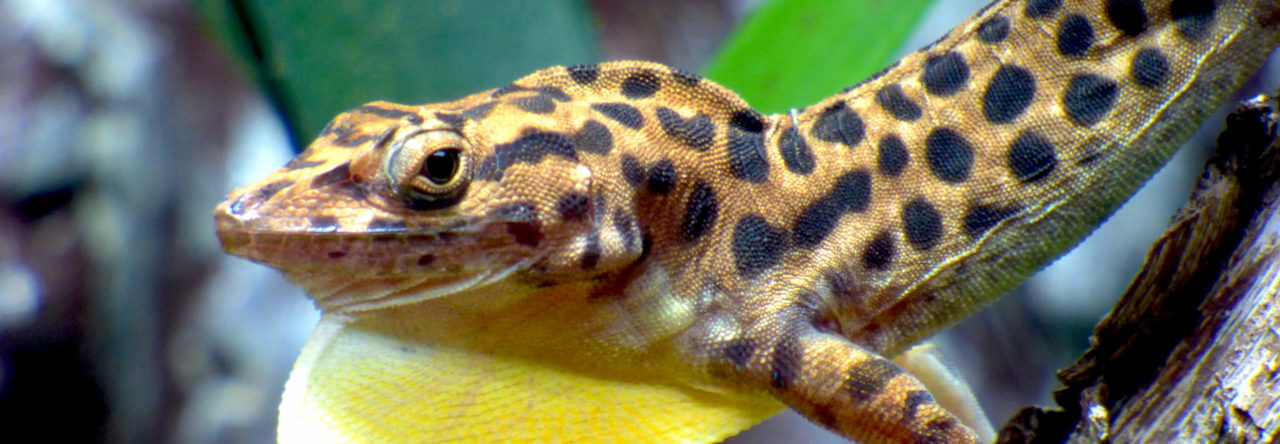
What can a kitty cam tell us about the secret lives of anoles? Photo from http://blogs.inlandsocal.com/pets/4501cat.jpg
The 97th annual meeting of the Ecological Society of America begins Sunday in Portland. These meetings are truly enormous, and given the great amount of ecological research, past and present, on anoles, it’s surprising that there are not more anole talks scheduled. Nonetheless, there are three, and they look to be good ones. On Tuesday, Sean Giery will talk about studies on the ecosystem role of anoles in Miami. Basically, by examining stomach contents and measuring stable isotopes, he determined the extent to which terrestrial resources enter arboreal ecosystems. For A. equestris and A. distichus, the route is terrestrial insects walking up trees and being eaten, whereas for A. sagrei, it results from foraging on the ground. Also on Tuesday, Jason Kolbe talks on an experimental study of founder events in the Bahamas. We’ve already reported on this study, but Jason will be providing at least a few snippets of new data from this year’s field season. Finally, on Thursday, Kerrie Anne Lloyd will talk about a study looking at predation rates by domestic cats in Georgia, as determined by placing Kitty Cams on housecats. Turns out that a favorite prey item is, alas, green anoles.
Check out the abstracts for these talks below the fold, and if any AA readers attend the talks, please file a report.







 Follow their exploits as they rampage through the eastern Caribbean, measuring dewlap spectra and general wreaking havoc.
Follow their exploits as they rampage through the eastern Caribbean, measuring dewlap spectra and general wreaking havoc. 




